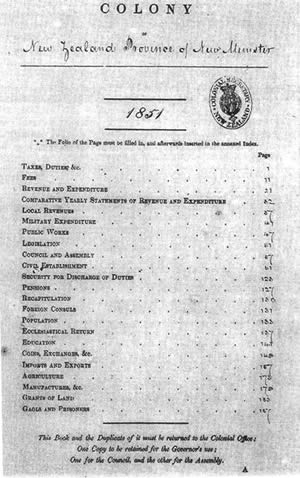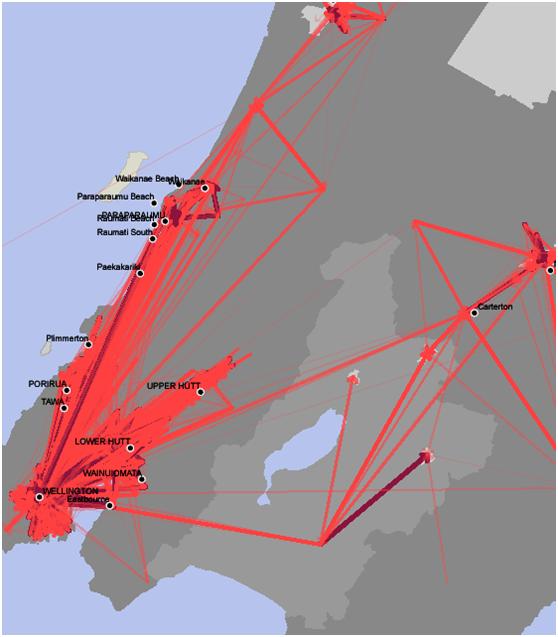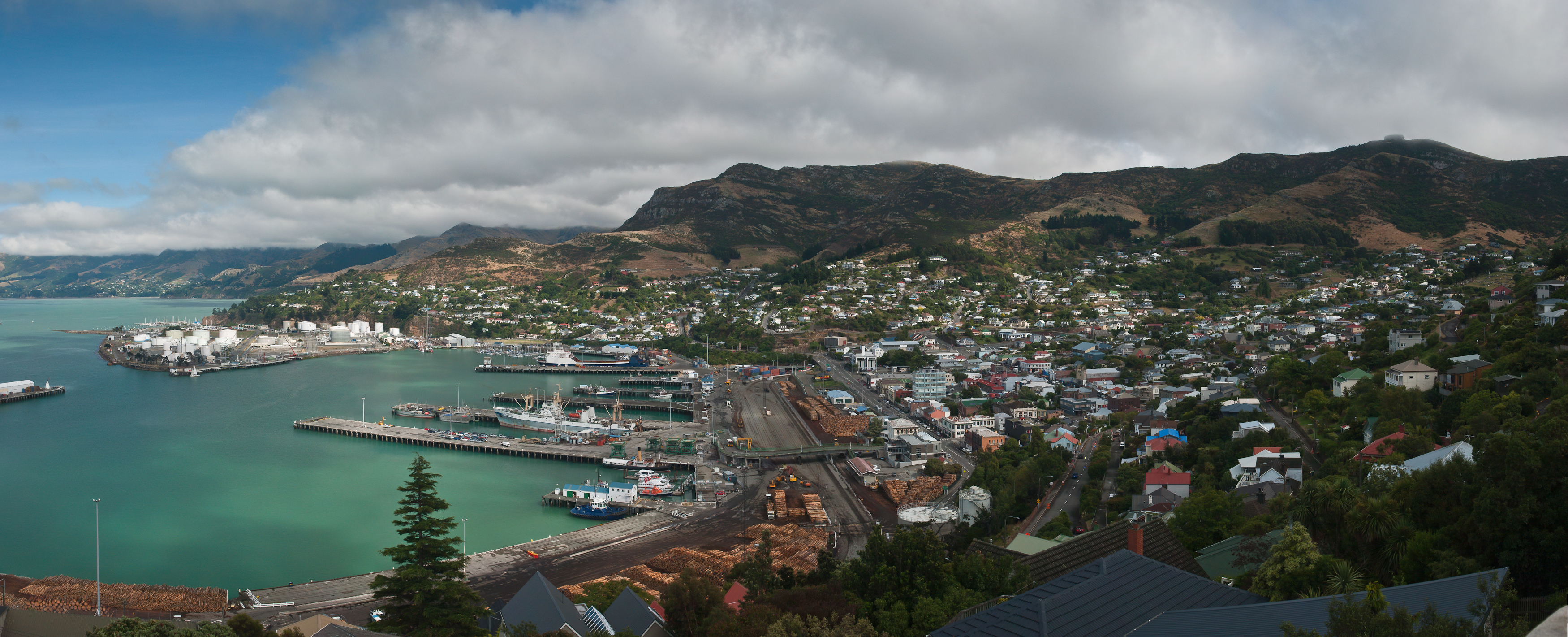|
1853 In New Zealand
The following lists events that happened during 1853 in New Zealand. The old provinces of New Munster and New Ulster are abolished and replaced by the Provinces of New Zealand. The first general election is held marking a major step on the way to self-government. Population The estimated population of New Zealand at the end of 1853 is 61,850 Māori and 29,600 non-Māori. Incumbents Regal and viceregal *Head of State – Queen Victoria *Governor – Sir George Grey Government and law New Zealand's first general election, held on the first of October. The House of Representatives has 37 elected members, and 14 members are appointed to the first Legislative Council. The 1st Parliament opens on 24 May 1854 The first Speaker of the House is not elected until Parliament opens on 24 May 1854. There is neither an official Prime Minister/Premier/Colonial Secretary or Finance Minister/Colonial Secretary until after the 2nd New Zealand Parliament is formed after the 1855 electi ... [...More Info...] [...Related Items...] OR: [Wikipedia] [Google] [Baidu] |
New Munster Province
New Munster was an early original European name for the South Island of New Zealand, given by the Governor of New Zealand, Captain William Hobson, in honour of Munster, the Irish province in which he was born. Province When New Zealand was separated from the Colony of New South Wales in 1841 and established as a colony in its own right, the Royal Charter of 1840 effecting this provided that "the principal Islands, heretofore known as, or commonly called, the 'Northern Island', the 'Middle Island', and 'Stewart's Island', shall henceforward be designated and known respectively as 'New Ulster', 'New Munster', and 'New Leinster'". These divisions were at first of geographical significance only, not used as a basis for the government of the colony, which was centralised in Auckland. New Munster referred solely to the South Island. The situation was altered in 1846 when the New Zealand Constitution Act 1846 divided the colony into two provinces: New Ulster and New Munster. New Muns ... [...More Info...] [...Related Items...] OR: [Wikipedia] [Google] [Baidu] |
Lieutenant Governor
A lieutenant governor, lieutenant-governor, or vice governor is a high officer of state, whose precise role and rank vary by jurisdiction. Often a lieutenant governor is the deputy, or lieutenant, to or ranked under a governor — a "second-in-command", rather like deputy governor. In Canadian provinces and in the Dutch Caribbean, the lieutenant governor is the representative of the monarch in that jurisdiction, and thus outranks the head of government but for practical purposes has virtually no power. In India, lieutenant governors are in charge of special administrative divisions in that country. In the United States, lieutenant governors are usually second-in-command to a state governor, and the actual power held by the lieutenant governor varies greatly from state to state. The lieutenant governor is often first in line of succession to the governorship, and acts as governor when the governor leaves the state or is unable to serve. Also, the lieutenant governor is often the ... [...More Info...] [...Related Items...] OR: [Wikipedia] [Google] [Baidu] |
Statistics New Zealand
Statistics New Zealand ( mi, Tatauranga Aotearoa), branded as Stats NZ, is the public service department of New Zealand charged with the collection of statistics related to the economy, population and society of New Zealand. To this end, Stats NZ produces censuses and surveys. Organisation Statistics New Zealand employs people with a variety of skills, including statisticians, mathematicians, computer science specialists, accountants, economists, demographers, sociologists, geographers, social psychologists, and marketers. There are seven organisational subgroups each managed by a Deputy Government Statistician: * Macro-economic and Environment Statistics studies prices, national accounts, develops macro-economic statistics, does government and international accounts, and ANZSIC 06 implementation (facilitating changeover to new classification code developed jointly with Australian statistics officials.) * Social and Population Statistics studies population, social conditions, ... [...More Info...] [...Related Items...] OR: [Wikipedia] [Google] [Baidu] |
Lyttelton, New Zealand
Lyttelton (Māori: ''Ōhinehou'') is a port town on the north shore of Lyttelton Harbour / Whakaraupō, at the northwestern end of Banks Peninsula and close to Christchurch, on the eastern coast of the South Island of New Zealand. As a landing point for Christchurch-bound seafarers, Lyttelton has historically been regarded as the "Gateway to Canterbury" for colonial settlers. Until the 2020 coronavirus pandemic, the port has been a regular destination for cruise ships. It is the South Island's principal goods-transport terminal, handling 34% of exports and 61% of imports by value. In 2009 Lyttelton was awarded Category I Historic Area status by the Historic Places Trust (NZHPT) defined as "an area of special or outstanding historical or cultural heritage significance or value", not long before much of the historic fabric was destroyed in the 2011 Christchurch earthquake. Location Lyttelton is the largest settlement on Lyttelton Harbour / Whakaraupō, an inlet on the northwe ... [...More Info...] [...Related Items...] OR: [Wikipedia] [Google] [Baidu] |
Otago Province
The Otago Province was a province of New Zealand until the abolition of provincial government in 1876. The capital of the province was Dunedin. Southland Province split from Otago in 1861, but became part of the province again in 1870. Area and history Otago Province was one of the six original provinces established in New Zealand in 1853. It covered the lower third of the South Island. Its northern neighbour was the Canterbury Province, and the boundary was the Waitaki River from the Pacific Ocean to its source in the Southern Alps, and from there a straight line to Awarua Bay (now known as Big Bay) on the west coast. The inland area of the Waitaki catchment was unexplored in 1853 and dispute later arose over which branch of the Waitaki should form the boundary. The boundary was delineated in 1861 as following the Ohau River to Lake Ohau and from there a straight line to Mount Aspiring and Awarua Bay. Southland Province split from Otago in 1861, but became part of the provin ... [...More Info...] [...Related Items...] OR: [Wikipedia] [Google] [Baidu] |
Canterbury Province
The Canterbury Province was a Provinces of New Zealand, province of New Zealand from 1853 until the abolition of provincial government in 1876. Its capital was Christchurch. History Canterbury was founded in December 1850 by the Canterbury Association of influential Englishmen associated with the Church of England. (An attempt was initially made to restrict residence in the province to members of the church but this was abandoned.) The ''Charlotte Jane'' and the ''Randolph (ship), Randolph''—the first two of the First Four Ships—arrived in the area on 16 December 1850, later celebrated as the province's #Anniversary Day, Anniversary Day. In 1852, the Parliament of the United Kingdom passed the New Zealand Constitution Act 1852, which amongst other things established Provinces of New Zealand, provincial councils. The Constitution contained specific provisions for the Canterbury Association; the first being that the new General Assembly (New Zealand Parliament) could not amend ... [...More Info...] [...Related Items...] OR: [Wikipedia] [Google] [Baidu] |
Nelson Province
Nelson Province was constituted in 1853 under the New Zealand Constitution Act 1852, and originally covered the entire upper South Island, including all of present-day Buller, Kaikoura, Marlborough, and Tasman districts, along with Nelson City, Grey District north of the Grey River, and the Hurunui District north of the Hurunui River. It was reduced in size by the creation of Marlborough Province in November 1859, then abolished in 1876, along with all the provinces of New Zealand. Area Nelson Province initially covered the entire upper South Island. The Marlborough Province split away from the Nelson Province on 1 November 1859 because the majority of the income of the Provincial Council came from land sales in the Marlborough region, but the funds were mostly used in the Nelson region. Land sales in Nelson and Marlborough netted the Nelson Provincial Council £33,000 and £160,000, respectively. Of that, £200 were expended benefiting the Marlborough region. There was c ... [...More Info...] [...Related Items...] OR: [Wikipedia] [Google] [Baidu] |
Wellington Province
Wellington Province, governed by the Wellington Provincial Council, was one of the provinces of New Zealand from 1853 until the abolition of provincial government in 1876. It covered much of the southern half of the North Island until November 1858, when Hawke's Bay Province split off, taking about a third of its area. Territory Wellington Province originally covered much of the southern half of the North Island. Its northern boundary was drawn arbitrarily across most of the middle of the island at latitude 39° south to the east coast, just including the entirety of Hawke Bay. North of that line was Auckland Province. The straight-line boundary did not extend right to the west coast, but dipped south to the coast just west of Waverley and short of Patea, allowing for New Plymouth Province (later renamed Taranaki Province) to the west. Hawke's Bay settlers broke away to form Hawke's Bay Province on 1 November 1858. Wellington Province's new eastern boundary followed the main d ... [...More Info...] [...Related Items...] OR: [Wikipedia] [Google] [Baidu] |
Taranaki Province
''For the current top-level subdivision of Taranaki in New Zealand, see Taranaki region'' The Taranaki Province was a province of New Zealand from 1853 until the abolition of provincial government in 1876. Initially known as New Plymouth Province, the province was renamed on 1 January 1859 as the Taranaki Province. Area With an area of some , New Plymouth Province was the smallest of the initial six provinces, and it was also the least populous. European settlement started in New Plymouth in 1841, which was the province's capital. For the first 30 years, European settlement did not extend many miles beyond New Plymouth. History At the beginning of the 19th century, a coastal fringe some deep was densely populated with Māori. Iwi from the Waikato region threatened these Ngāti Awa, and during the 1820s, many of the inhabitants left Taranaki. In 1832, Waikato iwi launched an assault with firearms, resulting in the remaining Ngāti Awa being killed or going into slavery apart from ... [...More Info...] [...Related Items...] OR: [Wikipedia] [Google] [Baidu] |
Auckland Province
The Auckland Province was a province of New Zealand from 1853 until the abolition of provincial government in 1876. Area The province covered roughly half of the North Island of New Zealand. It was the largest of the six initial provinces, both by area and population. The southern boundary was mostly along the 39th latitude, which was an arbitrary line, as the country's interior was little known by Europeans. It was not subdivided during its existence; the Taranaki Province (originally named New Plymouth Province) was the only other that remained unchanged during its existence. History The six original provinces were established in 1853. At that time, about 30,000 Europeans were living in New Zealand, a third of them in the Auckland Province. An estimated 70% of the Māori population was within the Auckland Province. Although the population of Otago Province (triggered by the Central Otago Gold Rush) and then also the Canterbury Province surpassed Auckland's, the northernmos ... [...More Info...] [...Related Items...] OR: [Wikipedia] [Google] [Baidu] |
1846 In New Zealand
The following lists events that happened during 1846 in New Zealand. Population The estimated population of New Zealand at the end of 1846 is 71,050 Māori and 13,274 non-Māori. Incumbents Regal and viceregal *Head of State – Queen Victoria *Governor – Sir George Grey Government and law * Chief Justice – William Martin Events * 5 January: The Māori language magazine, ''Te Karere o Nui Tireni'' publishes its last issue. It started in 1842. It is revived as ''The Maori Messenger'' and ''Te Manuhiri Tuarangi'' between 1849 and 1863. * 11 January: British forces occupy Ruapekapeka pa. * 17 January: ''The Auckland Times'' ceases publication. The newspaper was first published in 1842. * 11 March: The brig ''H.M.S. Osprey'' (Captain Patten) is driven ashore and wrecked at Herekino Harbour, having mistaken it for the entrance to the Hokianga Harbour, but no lives are lost. * 7 May: Little Waihi landslide kills around 60 Maori, including Mananui Te Heuheu Tukino II. * 16 ... [...More Info...] [...Related Items...] OR: [Wikipedia] [Google] [Baidu] |
New Ulster Province
New Ulster was a province of the Colony of New Zealand that existed between 1841 and 1853. It was named after the Irish province of Ulster. Creation Between 1841 and 1846, the province included all the North Island. With the passing of the New Zealand Constitution Act 1846, the province was defined as the North Island north of the Patea River mouth. Like the other province of New Zealand at the time, New Munster Province, New Ulster Province was headed by a Lieutenant-Governor who reported to the Governor of New Zealand. Abolition In 1852, a new Constitution Act was passed, and the New Ulster province was abolished and divided into Auckland Province, part of the Wellington Province and New Plymouth province (later Taranaki Province). Lieutenant-Governors * George Dean Pitt (14 February 1848 – 8 January 1851) * Robert Henry Wynyard Robert Henry Wynyard (24 December 1802 – 6 January 1864) was a New Zealand colonial administrator, serving at various times as Li ... [...More Info...] [...Related Items...] OR: [Wikipedia] [Google] [Baidu] |



